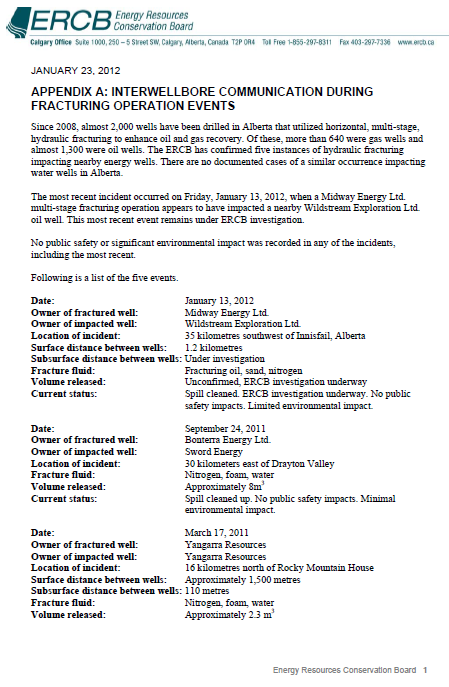Hydraulic fractures: How far can they go? by Davies, R. J., et al, April 21, 2012, Marine and Petroleum Geology (2012), doi:10.1016/j.marpetgeo.2012.04.001
The maximum reported height of an upward propagating hydraulic fracture from several thousand fracturing operations in the Marcellus, Barnett, Woodford, Eagleford and Niobrara shale (USA) is ~588 m. Of the 1170 natural hydraulic fracture pipes imaged with three-dimensional seismic data offshore of West Africa and mid-Norway it is ~1106 m. … Constraining the probability of stimulating unusually tall hydraulic fractures in sedimentary rocks is extremely important as an evidence base for decisions on the safe vertical separation between the depth of stimulation and rock strata not intended for penetration.
Figure 3. (a) Map of the globe showing location of the eight datasets. Red font e datasets for stimulated hydraulic fractures, blue font e datasets for natural hydraulic fractures (pipes). (b) Seismic line from offshore Mauritania showing a representative vertical pipe imaged on 3D seismic reflection data and its vertical extent. (c) Graph of stimulated hydraulic fractures in the Marcellus, Barnett, Woodford and Eagleford shales (after Fisher and Warpinski, 2011) and including unpublished data provided by Halliburton for the Niobrara shale. Inset e extract of the graph showing how the vertical extents of fractures were measured. All depths are in true vertical depth (TVD). The black dashed line e depth of the stimulation of the hydraulic fractures. Coloured spikes e separate hydraulic fractures propagating upwards and downwards from the depth of stimulation
Source: Davies, R.J., et al.
[Refer also to: 2,000 Feet Frack Setback by Federal Energy Regulatory Commission
Safety Advisory 2010-03 Communication during fracture stimulation by the BC Oil and Gas Commission, May 20, 2010.
Fracture propagation via large scale hydraulic fracturing operations has proven difficult to predict. Existing planes of weakness in target formations may result in fracture lengths that exceed initial design expectations.
Source: EUB (now ERCB, soon to be AER) Library





